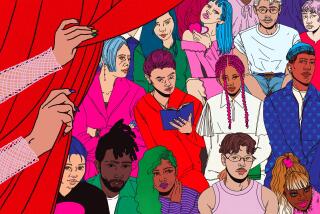The art of the guilty pleasure

I don’t believe in guilty pleasures. Don’t get me wrong: I believe in pleasure, and in guilt, just not the two together. What is guilt-inducing about pleasure? Nothing — except for the realization, perhaps, that someone else is having none.
And yet, the subject is on my mind because of Adam Sternbergh’s essay this past weekend in the New York Times Magazine, “All of the Pleasure. None of the Guilt,” which also takes a stand against feeling bad about what we like.
“A friend of mine,” Sternbergh begins, “made a resolution once: No more guilty pleasures. I assumed at first that he meant he would no longer indulge in, you know, the usual cultural indulgences: those movies, books, TV shows, albums, et cetera, that are unabashedly enjoyable (like Miley Cyrus’s ‘Wrecking Ball’) but that also confer a patina of guilt to the self-conscious cultural consumer even as he’s enjoying them (like Miley Cyrus’s ‘Wrecking Ball’).
“But I was wrong. … What he meant was simpler and, I have since realized, more radical and ultimately more inspiring. He’d still enjoy all those cultural indulgences, he said. He would just no longer classify them as indulgences.”
This is hardly a new argument; I think of Madison Smartt Bell’s 1987 Antaeus essay “Literature and Pleasure: Bridging the Gap,” or Raymond Chandler grumbling in the pages of the Atlantic Monthly that “[t]here are no vital and significant forms of art; there is only art, and precious little of that.”
Still, it remains an issue well worth raising, especially at a moment when the idea of cultural divide lingers, despite every effort to push it aside.
Of course, when it comes to culture, I’ve long subscribed to the most subjective definition: What I value is culture to me. The same is true for all of us, creating our own canons, our own hierarchies, in which certain works resonate while others will never resonate, regardless of the value placed on them.
Take Saul Bellow’s “The Adventures of Augie March,” which Laura Miller acknowledged in Salon last week she found “tedious,” although she’d “never … assert that the novel has no merit.”
As it turns out, I feel exactly the same. After that magnificent opening — “I am an American, Chicago born — Chicago, that somber city — and go at things as I have taught myself, free-style, and will make the record in my own way” — the novel quickly craters for me; I have never been able to read my way more than 50 pages in.
Does this mean “The Adventures of Augie March” is a bad book? Not at all. (Although I’d argue that one of its problems is Bellow’s coldness as a writer, his — there’s no other way for me to put it — lack of heart.) Nonetheless, as Miller suggests, its canonical status leaves a weight that can be difficult to shrug off.
“Intellectual insecurity,” she writes, “is, alas, a pervasive problem in the literary world. You can find it among fans of easy-to-read commercial fiction who insist (on very little evidence) that the higher-brow stuff is uniformly fraudulent and dull, and you can find it among those mandarin bibliophiles who dismiss whole genres (on equally thin evidence) out of hand.”
This brings us back to Sternbergh, who, as culture editor of the Times Magazine and author of the novel “Shovel Ready,” is a veteran of these debates. He “advocate[s] for an … imaginative leap: one that acknowledges the wide spectrum of pleasures that books (and TV, movies, music, theater, what have you) can offer us and then — and here’s the radical part — doesn’t immediately insist that these pleasures must also be sorted into a moral hierarchy.”
To support his argument, he recalls his father, who didn’t care that he read comics as a kid because “[h]e figured reading was reading. Pleasure was pleasure. Everything else would take care of itself.”
I’m with Sternbergh’s father on this one. I, too, am thrilled when my kids read anything, thrilled for them to have the experience, the imaginative transference, of engaging with a book. This has happened for them, as for many of us, through a wide array of stories: from “Scooby Doo” to “Lolita,” “Twilight” to “The Great Gatsby” to the latest novel by John Green.
Part of the idea here is that, as Sternbergh writes, “condemning certain aspects of the culture as unworthy or spiritually harmful or, even worse, somehow morally detrimental is a popular critical pastime with a terrible batting average: basically .000, if you want to run the numbers. Jazz, rock ’n’ roll, hip-hop, comic books, sitcoms, slasher films, pulp novels, you name it — all have at one time or another been dismissed as somehow less than noble, their consumption salted with guilt from on high, yet somehow all survived and even thrived.”
Even more, however, there is this: As a reader, as a listener, as a viewer, I want to explore widely, to experience a variety of styles and points of view. Right now, on my nightstand: Knausgaard and Maria Semple, Woody Guthrie and Alafair Burke. At the top of the stack is an old paperback of Peter S. Beagle’s “I See By My Outfit,” which I’ve been meaning to re-read; it was once a favorite book of mine.
Some of this I will get to, and some of it I will never get to; that’s in the nature of nightstands, after all. But the larger point, Sternbergh suggests, is that the only thing that matters is my pleasure. “You’ve got your own boat, too,” he tells us. “Now go float it.”
ALSO:
The return of Inspector Maigret
100 years of William S. Burroughs: The nakedness of words
More to Read
Sign up for our Book Club newsletter
Get the latest news, events and more from the Los Angeles Times Book Club, and help us get L.A. reading and talking.
You may occasionally receive promotional content from the Los Angeles Times.








